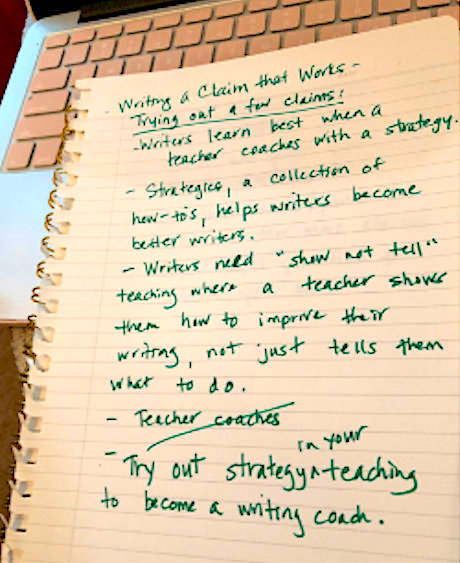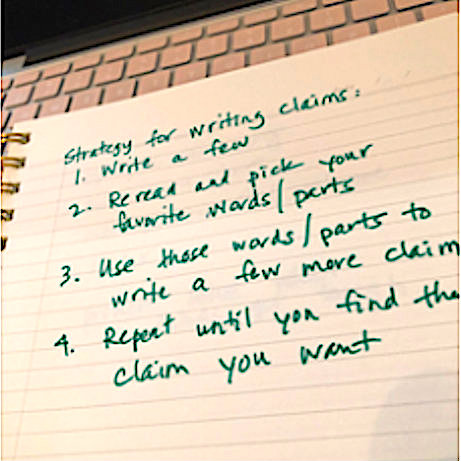Writing Teachers Are Coaches, Not Umpires
By Courtney Rejent and Patty McGee

This got us thinking.
There is something unique to umpires; most umpires behind the plate make four main calls: ball, strike, safe, and out. Yes, there are a few other calls, but mostly they make these four.
Their role is to simply name the good or bad. This is not a knock on umpires at all. It is hard to make these four calls accurately all the time. It is an essential role within the game. But their role is to remain neutral and not influence the players.
Baseball coaches, on the other hand, play a very different, more complex role: the role of teacher. They study what each player is doing and teach them next steps. They customize their coaching depending on the player, bearing so much in mind – position, strengths, challenges, past games, recent practices, and more. They focus on the growth of the player, not the correctness of the game.
Correcting Is Not Teaching
We argue that the writing teacher’s most important role is not that of an umpire, but that of the coach. This is not a small distinction. Let’s dwell on this for a moment. A writing teacher assuming an umpire approach looks for what is right or wrong in a student’s piece and communicates this to the writer by “fixing it” in some way.
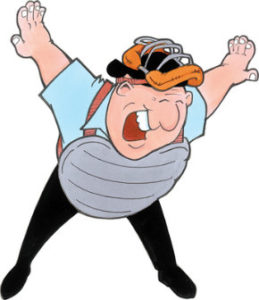
Correcting makes the writing piece better, but unless each student looks at those corrections and seeks out strategies to learn from them (and let’s be real, very few students do so), those corrections stay just where they are.
Correcting student writing falls short of what writers truly need. Much like baseball players who throw, catch, bat, run, field ground balls, all in one game, writers need to draw upon lots of skills. They need to be able to come up with ideas, plan for those ideas, draft with structure, make revisions, and edit accurately.
Writers need to be able to utilize many skills simultaneously, just like a baseball player would. Correcting cannot teach all of this. Thankfully, coaching can!
When a writing teacher wears the coach hat, some powerful teaching moves emerge to support the very complex act of writing. The one we most want to highlight is the use of strategy.
Strategy, a mini how-to, offered and modeled throughout the entire writing process, has been the key for many young writers’ growth and ability to access skills. It is a simple and mighty move that disentangles the hard parts of writing.
Skill vs. Strategy
The terms “skill” and “strategy” often have different meanings to different professionals. In this post, we define “skill” as something a writer does to make their writing better (revise, organize, edit) and the term “strategy” as the steps we take to access that skill (to revise we read, find a place to add a fact, and write a sentence or two that includes that fact).
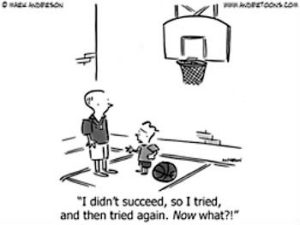
Looping back around to writing, a skill a writer would benefit from is learning how to elaborate in an informational piece. One strategy might be steps to use twin or triplet sentences. Another strategy might be steps to use an example. A third strategy might be steps to use a metaphor. Each of these strategies help access the skill of elaborating. Essentially, a strategy is a recipe for a writer.
The first step into skill and strategy work is uncovering the skills that have the most impact on writers and their writing and then teaching strategies (just a few) to access that skill. With our coach hats on, let’s dig into this a bit more.
How to Write a Strategy
The strongest coaches are the ones who have played the game. In turn, the best place for classroom coaches to find strategies for writing instruction is by doing some writing of our own. These strategies we gain from direct experience are precious and valuable to each teacher’s toolbox.
Here is our favorite way of coming up with strategies when we write: (AKA a strategy for coming up with strategies):
- Take a few minutes to write in the same text type/genre as students.
- Notice what you are doing as you write.
- Jot down your thinking process or steps you are taking in order to write.
We tried it ourselves with argument writing. We know that writing a claim is one of the skills writers need so we tried writing claims ourselves, noticed what we did, and then jotted down our thinking process. Here’s what it looked like:
(above) We wrote a few claims.
(above) This was our process – and therefore our strategy!
Now we hope you will give this a whirl and see what happens (Right now! Don’t wait!). We found it was very helpful to slow down our process and think about the steps we were taking. We also suggest asking yourself these questions if you are feeling stuck: What was I thinking about? What did I write down? What was my process?
Other Techniques for Finding Strategies
Just in case our strategy is not working for you, here are three other ways to demystify the process of creating your own strategies:
You can: Pick a pattern
Strategies often flow like this: first the writer is going to think or point to something, then they are going to ask themselves a question, then they are going to do something based on the answer to that question. For example:
Skill = Elaboration
Strategy = Mining my own sentences for ideas for more sentences.
Think/Point: Point to a sentence I already wrote that I really like.
Ask: Ask myself, “What else do I have to say about the main idea of this sentence?”
Do: Write another sentence about this main idea and include it after the original sentence.
You can: Use first / then / next / finally language
These are similar to sentence starters. Sometimes language helps get the brain juices flowing and helps us see our process more clearly. Thinking about strategy through the lens of steps may be helpful. Naming steps by starting with “First I…” can help that process.
First I
Then I…
Next I…
Finally I…
You can: Ask a student
We have found some of our favorite writing strategies by talking to the learners in our classrooms. We might sit with a writer and ask them a few questions. These are helpful:
What were you thinking about?
What did you write down?
What was your process?
What did you do first? Next? After that?
Strategies Promote Independence
So, writing coaches, as you build your toolbox of strategies we want to leave you with one last note of inspiration. The ultimate goal of strategy instruction is to provide a repertoire that empowers learners by allowing them to attain a level of independence.
We have seen first-hand the power strategic coaching has on the writers we work with, both in our own classrooms and in those of teachers who made this shift. We left the umpire role on the field, put our coaching hats on, and students were all the better for it. Join us!
Courtney Rejent is an instructional coach in the Ramsey Public Schools. Previously, she worked as a middle school ELA and social studies teacher in Paramus, New Jersey. Her instructional approach was highlighted in Patty McGee’s Feedback That Moves Writers Forward. Courtney is a member of the Litogether Think Tank and is a faculty leader at the Paramus Summer Literacy Institute.
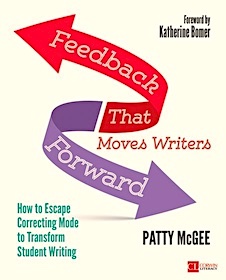
Patty has been a teacher, media specialist and school-based coach. She has served as Lead Literacy Consultant with Gravity Goldberg, LLC. Patty is now a full-time author and consultant specializing in writing. She tweets at @pmgmcgee and shares resources at pattymcgee.org.


